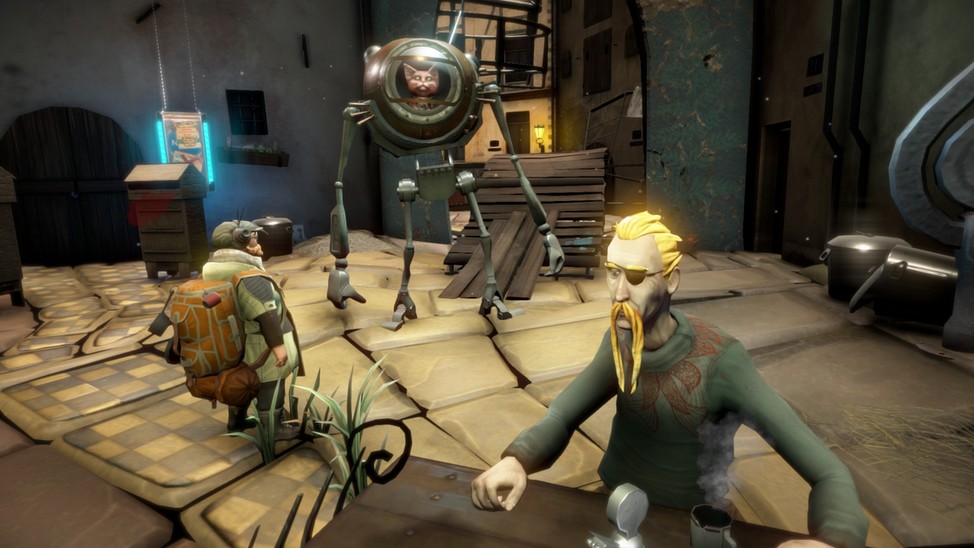
Ask a kid today what they want to be when they grow up, and you might hear something like “game developer,” “3D artist,” or “character designer.” The way young people express creativity is changing and it’s happening fast. Across the United States, STEM camps are adapting. Rather than teaching drawing first, many now introduce students to digital sculpting right out of the gate.
This shift isn’t about replacing traditional art. Instead, it’s about meeting kids where they’re already comfortable: in immersive, digital spaces. With tools that mimic the feel of molding clay, these camps help kids build confidence by crafting 3D forms they can manipulate, rotate, and reshape in real time. It’s creative, it’s intuitive, and it mirrors the digital environments they already love.
Why Drawing Isn’t Always the Starting Line
In generations past, drawing was the natural first step in learning visual art. But for kids raised on animated films and video games, flat lines on a page don’t always spark excitement. These kids have grown up seeing their favorite characters in rich, dimensional detail. To them, shapes with depth feel more “real.”
Digital sculpting gives them that tactile connection from the start. They can pull, stretch, and shape digital clay, immediately seeing how their decisions affect the form. Paired with gamified tools like those used in a 3D sculpture game this style of learning becomes both engaging and empowering.
When Art Meets STEM
At first, sculpting might seem like it belongs in an art class. But in a STEM context, it’s surprisingly technical. Sculpting in 3D teaches spatial reasoning, physics, and even the basics of engineering. It involves thinking in terms of volume, measurement, and symmetry all core STEM concepts.
More importantly, it teaches students to think like builders and problem-solvers. When they run into challenges like trying to keep a model balanced or shaping symmetrical wings they troubleshoot in creative ways. Especially when presented through an interactive 3D sculpture game, these problems become exciting puzzles to solve.

The Tools Sparking Curiosity
Today’s sculpting tools are far more kid-friendly than the intimidating software used by pros. Applications like Tinkercad, Nomad Sculpt, and ZBrushCoreMini make it easy for kids to dive in with a few simple gestures. They can zoom, pan, and adjust with the swipe of a finger, exploring without fear of “doing it wrong.”
Many of these platforms feel more like games than software. Some even include challenges, badges, or creative missions. Combined with a fun and immersive 3D sculpture game, these tools allow kids to explore 3D modeling at their own pace building skills without feeling like they’re in class.
Instant Feedback Builds Confidence
One of the reasons digital sculpting is so effective for young learners is the immediate feedback loop. Kids can see how a small adjustment to a model changes its entire shape or symmetry. That kind of instant reaction builds a strong sense of cause and effect.
More importantly, it removes the fear of failure. They can undo a move, try again, or start fresh with a new idea all without the mess of erasers or wasted paper. In a game-like environment, especially something resembling a 3D sculpture game, mistakes become part of the learning adventure, not a setback.
Bringing Stories to Life in 3D
Beyond modeling static shapes, digital sculpting helps kids explore storytelling. Many programs encourage students to build characters or entire environments, prompting them to think not just about what something looks like but who or what it is.
A dragon, for example, isn’t just a cool sculpture. It has a backstory. Why is it angry? Where does it live? How does it move? When students sculpt for storytelling, they begin to think more like creators and directors, a valuable skill for everything from gaming to filmmaking. That’s where the magic of the 3D sculpture game genre really shines: it combines design with world-building.
Real Skills for Real Careers
The job market is changing, and 3D modeling is quickly becoming a must-have skill across many industries. From animation to virtual reality, architecture to industrial design, employers are looking for artists who understand how to work in three dimensions.
By starting early, kids gain a major advantage. They’re building a foundation in industry-standard thinking and workflows. And whether they end up designing video games or prosthetic limbs, their time in a 3D sculpture game or similar learning environment gives them a head start in fields where creativity meets precision.
Equity in Digital Art Access
The beauty of digital sculpting is that it doesn’t require a full art studio or expensive supplies. Many tools are free or low-cost, and increasingly, public schools and libraries are integrating them into youth programs. Nonprofits across the U.S. are also stepping up to ensure access to devices and the internet for underserved communities.
By reducing barriers to entry, more kids can explore their artistic potential regardless of background. Gamified environments like a 3D sculpture game further support that mission by turning learning into play, making the experience both inclusive and engaging for everyone.

Support From Parents and Teachers
It’s natural for parents to ask, “Why aren’t they drawing first?” But when they see their kids excitedly sculpting creatures, sharing 3D characters, and building digital worlds, their hesitation usually turns into pride.
Teachers, too, are embracing digital sculpting as a cross-curricular tool. It’s being used to reinforce math, history, biology and even literature. From recreating ancient artifacts to modeling human anatomy, students are using digital sculpting to deepen their understanding of other subjects in a way that’s both interactive and creative.
Final Thoughts
As STEM camps across the U.S. embrace digital sculpting, they’re not just teaching kids how to model in 3D. They’re helping them see the world differently through the lens of builders, artists, and thinkers. This hands-on, visual learning approach connects deeply with how today’s kids process information and express themselves.
Whether they’re designing characters for their own 3D sculpture game or simply exploring the joy of shaping digital clay, they’re developing skills that matter for school, for careers, and for life. And just like players who explore all Call of Duty games in order on PlayStation to understand how the franchise evolved, these young creators are learning that the best way to grow is to keep building.






